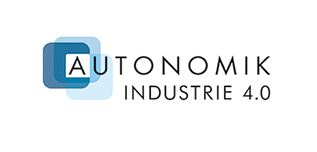Cross-cutting topics
Ju-RAMI 4.0
Thanks to "Ju-RAMI 4.0", lay people with no legal background, such as developers, can estimate the legal framework that they have to consider for their development. With this model, the legal risks, adverse effects and threats can be classified along the entire networked value chain.
If the Industry 4.0 Future Project is to be a success, standardisation will be essential, as too will be the mastering of the legal challenges specific to Industry 4.0. Industry 4.0 calls for unprecedented integration of physical and virtual systems across domain and hierarchy borders as well as lifecycle phases. This will only be possible by using specifications and standards based on consensus and within the existing legal framework. The Reference Architecture Model for Industry 4.0 (in short: RAMI 4.0) already established the foundation for a common understanding and a common language for stakeholders of Industry 4.0. RAMI 4.0 comprises a coordinate system that maps the key process steps of Industry 4.0's added value. With RAMI 4.0, highly flexible Industry 4.0 concepts can be described and transferred to implementation. The model answers for the first time the questions regarding where existing standards have to be used and where standards still have to be developed. In this way, complex interaction can be broken down into clear-cut process steps.
Based on the Reference Architecture Model for Industry 4.0, scientific assistance for the AUTONOMICS for Industry 4.0 technology programme has now taken a first step towards a "legal" reference architecture for Industry 4.0. Just like the reference architecture model, JuRAMI 4.0 comprises a three-dimensional coordinate system that maps the key areas of law and contains the Industry 4.0 components. It serves as a basis for analysing legal issues relevant for Industry 4.0 and, as an easy-to-understand diagram, should enable practical application without extensive legal knowledge. The aim here is to quickly present a first reference framework for Industry 4.0 project stakeholders that could help them to identify existing legal loopholes while offering first approaches to solving these problems.
Ju-RAMI 4.0 was developed in co-operation with experts from the projects of the AUTONOMICS for Industry 4.0 technology programme headed by Prof. Dr. Dr. Eric Hilgendorf from "Forschungsstelle RobotRecht" at Würzburg University and Reinhold Pichler from DKE German Commission for Electrical, Electronic and Information Technologies of DIN and VDE, as well as experts from the AUTONOMICS scientific assistance for law and standards. Ju-RAMI 4.0 is now to be developed further in the near future. An interactive version of the layer model will be available next year.
- Recommend this page:
- Print view
